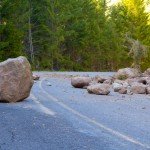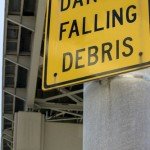

If we don’t win, you don’t pay.
NO WIN – NO FEE

ON CALL 24/7

U.S. Marine

Did you or a close loved one suffer an injury or lose a family member to a bad weather car accident in Los Angeles County, CA? Believe it or not, annually, several thousand people suffer injuries from a wide range of weather-related vehicle collisions. So a bad weather accident isn’t always from rainfall. It could be a dust storm, ice, or snow, among other causes.

Many Los Angeles drivers try to control the drastically increased risks of driving in bad weather, but accidents can still happen. Approximately 22% of motor vehicle accidents in the United States are due to weather conditions changes. (See Federal Highway Administration statistics).The most significant cause of weather-related motor vehicle accidents in Los Angeles, California, is due to the oil rising from wet road surfaces immediately during and after a rainstorm or stormy weather conditions. Nationwide, 46% of reported collisions occur during rainfall, and 73% of those traffic collisions involve wet, slick pavement in a bad weather accident, with many leading to wrongful death every year.
Naturally, many people assume they cannot get money for a weather-related accident in Los Angeles because you can’t sue Mother Nature for negligence or wrongful death over a bad weather accident. But there are many potential defendants in cases related to car accidents caused by adverse weather conditions. And this is because many bad weather accidents happen during good weather, as discussed. Ehline Law Firm Personal Injury Attorneys, APLC is one of the highest-rated, top-notch boutique law firms serving wounded clients in California with bad weather car accidents.
Our staff and dedicated team of legal experts have earned their fantastic reputation due to their trustworthiness, aggressiveness, and case yield results in any Los Angeles bad weather accident. So if you suffered injuries in a weather-related car accident, just because only your vehicle was involved doesn’t mean you can’t get a large payout from an unknown defendant for a bad weather accident.
How Lawyers Spot Problems in a Bad Weather Accident
Because car accidents in inclement weather may have many probable causes, only a sharp legal eye can determine the reasons for the crash and the effects of a bad weather accident, ELFPI’s skilled team of attorneys stands ready to use their experience to help. Discussed below are some other not-so-discussed causes of weather-related wrecks.
Not all Bad Weather Accident Cases are the Same
Weather-related accidents are wrecks in hazardous weather conditions, such as heavy winds, sleet, rain, fog, snow, or hail. Another example could include driving to your condo in Palm Desert from Los Angeles and blasting while going through a sandstorm. This is in fact, a bad weather accident. Your decreased visibility and strong winds could sandblast the paint off your car and blow your vehicle off the road during a bad weather-related accident.
Road Debris
Weather-related accidents can also include road debris blown onto the slick, oily pavement immediately after a fresh rain downpour. Most wrecks are caused by human error. And this remains especially for those behind the wheel during a Los Angeles bad weather accident. However, some issues are caused indirectly or due to passive actions.
Fault in a Los Angeles Bad Weather Accident?
In cases where the person or persons at fault remain unknown, you and your auto accident attorneys must weigh the evidence. So that way, you determine who needs to take responsibility for any resultant car crashes. Car accident attorneys at our firm can help prove your case.
Bad Weather, Road Debris, Objects, And Los Angeles Car Accidents Go Hand In Hand?
You had better believe it, yes, traffic accidents and inclement weather go hand in hand! Car accidents caused by debris and foreign materials, like a spilled load from a moving or farm truck, are nothing new. Also correct, litter and things falling off trucks and cars are part of the problem.
But alas, much roadside and roadway debris results from materials washed into the highway after bad weather. In a way, it is foreseeable to the road’s master (usually the government) that flooding brings waste products and organic materials from any myriad of conditions that can result in landslides and even sinkholes.
Slime, Ooze and other Debris
Road conditions from a bad weather-related downpour can lead to serious injuries and death to road users and pedestrians. Also, months of trash, oil, sludge, and other items dumped into the sewers will eventually flow to and from gutters and drainage ditches. And that material often ends up in or on the roadside, splashing on your windscreen. Heavy winds can scoop up these objects after the areas dry. Windshield wipers cannot clear the muddy mess fast enough, obscuring your vision.
Special Risk – Motorcycle Riding
According to insurance companies, a motorcycle rider is particularly at risk of being hit, killed, or blinded during these periods. And sometimes, this debris ends up on the freeway.
Construction Debris
Imagine a bunch of construction planks flowing in front of your car when traveling at freeway speeds during inclement weather. The resulting motor vehicle accident could easily kill or maim others sharing the slippery roads.
Falling Objects
You need to imagine trees or even heavy traffic signals falling into the street, rock slides, and massive boulders avalanching down steep hills, such as in Malibu Canyon. Many drivers could have avoided these mishaps if not, but for a poor design that failed to account for or prepare for future substantially changed roadway conditions causing a horrific car crash.
Poor Road Maintenance
Workers conducting poor maintenance before and after a downpour causes road users to suffer severe injuries or death. For example, potholes tend to occur in high-traffic areas with many big rigs and other traffic, placing loads of pressure on the asphalt’s surface or wearing course, leading to road closures and additional mobility problems for travelers.
Big Rigs and Road Destruction
The constant flexing and heaviness of vehicles and water’s normal expansion and contraction properties mean the road’s base course, subbase, and subgrade weaken, leading to a bad weather accident. The road surface can develop tiny cracks and fissures over time. During cold, rainy, or snowy conditions, these cracks expand, contract accelerated, and expel debris onto the road, developing a pothole crack or fissure.
Negligent City Workers?
Once road depression gets reported in L.A. County or L.A. city by a driver appearing on the road surface, local police may detour traffic with traffic safety flares and other methods. Simultaneously, maintenance crews, machinery, bright emergency traffic lights, and repair equipment should get dispatched to the danger zone, even during poor weather conditions.
Their job is to remove broken pieces of the pavement and fill any gaps and broken details of asphalt that could harm people using the road during good and bad weather conditions.
Workers must assume the underlying soil around the pothole is fatigued as well. Because of this, traffic may need to be slowed and funneled into one lane after the CHP performs a round-robin, so the workers can safely set up caution signs and construction zone warnings.
Car Accident Funnels
Slowing traffic remains vital to protecting other motorists from possibly new breaks in the poorly supported asphalt surface. Frequently, speed “slow” signs are used by Caltrans or some other workers to get drivers to drive slower. But on vast stretches of freeway or school zones, other modern methods are used in tandem with more traditional traffic speed warnings.
Modernly, workers may deploy radar-containing machines that display the speed of the oncoming motorist. When drivers exceed the speed limit, a message will flash, instructing them to “slow down.” The point is that adverse weather brings a series of countermeasures before and after seasonal conditions.
Failure to use proper road signs and detours near construction zones can spell disaster for a motorist. In other words, someone can be liable to pay for your injury in many ways, even when the insurance company says there is no coverage.
But only a great lawyer will know what to do, who, and how to pursue it. But as you can see, signs remain an essential source of roadside information for the driver during repairs.
Mostly, it is from other drivers, construction crews, state workers, or natural occurrences. And such obstructions can be a significant impediment for motorists. To begin with, how the road debris, damage, or obstruction existed on the motorway remains vital evidence.
Who Can I Sue for My Roadway Debris or Object-Caused Motor Vehicle Collision?
Ehline Law has seen similar issues in the past. For example, California DOT or Caltrans employees failed to take action after seeing a blocked roadway or walking path. Also, sometimes the responsibility for someone’s injury lies with a private maintenance provider employed or contracted by the State of California, County, or the City of Los Angeles. In these cases, injured workers and car accident victims might be employees.
All of these above employers might be on the hook to pay for other people’s damages and injuries. So they might have to cover the people who work for them. But they will only pay if forced to do so. In other words, they must pay for your reasonable, allowable damages if the evidence shows their legal liability by proof. Attorneys are responsible for gathering that evidence and proving the case.

Often, accidents are caused by water, obscuring normally visible hazards, such as potholes. These hazards could drive a car to collide with another vehicle, a center divider, or a fixed object like a bus stop bench. And these wrecks can still happen with cars with built-in safety features to reduce the incidence of injury.
Sadly, injuries remain all too common after accidents involving terrible weather. Also, there are some other factors to consider carefully. For example, heavy winds can blow cars and heavy trucks off the road during pouring rain.
Detours and arterial roadway closures remain possible, such as those leading to and from urban areas. Traffic signal phasing can also become disrupted, leading to long delays due to reduced vehicle speeds and roadblocks.
Snow And Sleet Conditions
Nationwide, snow or sleet on the road is responsible for around 17% of motor vehicle collisions. Although snow is not as common in Southern California, severe snowfall does happen in the state.
But if the area is not expecting such a snowfall and has a high percentage of inexperienced snow drivers, it might be good to stay off the road altogether. However, if you have to drive during such a time, be conscious of other drivers on the road, put on your lights, and slow down.
Iced-Up Road Conditions
Again, icy roads remain rare in California unless driving in the higher elevations of Lake Arrowhead, Big Bear, Rancho Palos Verdes, Palos Verdes Estates, or Rolling Hills Estates. So you could find yourself in thin air quickly as you drive up the winding roads into the mountains. Most of all, city folks are clueless when driving in these different conditions.
Nationwide, icy roads make up around 13% of road accidents. Sadly, this fact remains true even when operating four-wheel-drive vehicles or passenger cars equipped with snow chains. In particular, residents of L.A. driving to and from the Tera Nea Hotel or the Trump Golf Course must pay attention to signs of black ice and frozen roads during California’s winter months.
What is Black Ice?
One of the most dangerous icing conditions on the roadway is black ice. Mostly, this is water on the road that freezes once night falls. And it is often not visible to drivers at night at all. In some cases, the driver may see the ice illuminate from the vehicle’s headlights. But often, there is no time to use extra caution driving on this section of the pavement.
Reducing Ice-Related Accidents?
Having little knowledge is essential during the colder months of the year. And having access to current weather information can help. That way, drivers and their passengers can remain safer. Being prepared for icy conditions is essential when operating a motor vehicle. But drivers must also be ready for a variety of weather conditions. Any of these can result in ice forming on roadways.
A few things to remember during cooler weather are:
- Heavy icing is possible on asphalt and concrete if there is fog and the temperature is near freezing at 32 degrees F.
- Bridges often freeze before roadways in near-freezing temperatures.
- Low-lying areas and valleys often have icing conditions since cold air settles in these areas.
- When the sky is clear, but moisture is on the road, and the temperature falls below the upper 30s, the streets can become icy.
Foggy Driving Conditions
Nationwide, fog makes up around 3% of reported road accident causes. Any Marine driving back from weekend liberty from L.A. to Camp Pendleton car drivers can experience foggy driving conditions.
Anywhere along the San Diego Coast can present near zero-visibility driving conditions. However, fog makes up a small percentage of wrecks in areas where there is a lot of moisture, such as Carlsbad, CA.
What Conditions Cause Icing On Roads If It isn’t Raining Or Sleeting?
Ice on roadways is not always from rain or freezing rain. The moisture can come from several other weather factors and temperatures around 32 degrees F or freezing.
- Fog settling on the roadway combined with freezing temperatures can cause heavy icing.
- Frost is a collection of frozen moisture you can see in the air after sunset, during the night and early mornings.
- Snow melts during traffic from the warming of the roadway and becomes liquid. But when the pavement cools and temperatures dip during the day or night, melted snow water will freeze again.
- Groundwater seepage freezes on the road due to the air temperature.
- Freezing rain or sleet can cause icy road conditions because of freezing air temperatures.
These conditions can occur one at a time. Or they can be a combination, with more than one making the roads hazardous, leading to more motor vehicle accidents.
Do Valleys And Low Lying Areas Present Special Dangers?
Valleys and low-lying areas often have icy road conditions when other regions may not have any problems. This is because cold air is more substantial and denser than warm air. So this causes it to move down from higher elevations, even if it’s only a minor hill.
Clear nights with relatively few clouds result in colder temperatures. And surfaces like asphalt tend to cool faster than the air above. This air causes low-lying areas to be as much as 2-5 degrees colder than elevated areas a short distance.
City temperatures are warmer than in rural areas. But this is usually a double-edged sword. After all, the warmth can melt freezing rain, snow, and rain creating slick conditions leading to Los Angeles car accidents.
When the traffic slows and the evening falls, temperatures decrease. So this causes water on the roadway to freeze when the temperatures are low. There are some areas where the air may be colder than in other areas. And this is referred to in meteorology terms as thermal signatures. But it isn’t easy to see at night, further causing Los Angeles car accidents in poorly lit areas, leading to a chain collision car crash.
Fog And Ice Car Accidents
Fog occurs when moisture is in the air and temperatures drop the dew point. This moisture is thick and dense, containing large amounts of water. So it is carried by the air current and passes over roadways. And if the temperature is below freezing, it can result in severe icing in a matter of minutes, causing slippery Los Angeles car accidents.
And car accidents like that can happen on an otherwise clear night. Cold nights with fog blanketing a roadway has resulted in numerous serious Los Angeles car accidents. They were due to roadway icing when temperatures dipped into the mid-30’s in Los Angeles areas like Palos Verdes Estates, CA.
Frost And Icy Roadway Vehicle Accidents
Frost is moisture that settles on the ground on cool and usually clear nights. So this forms with low wind speeds, generally under ten mph. But the creation of frost touches on infrared radiation. So these clouds absorb and emit, and warmer objects emit more infrared radiation.
But on clear nights, the surface or ground emits infrared radiation without the clouds in which to reabsorb. So this is lost to space, rapidly cooling the road surface and air.
The air away from the surface is warmer, so the air’s increasing height is called an inversion. Cloudy night inversion does not occur. This inversion is because the clouds blanket the surface by preventing the quick loss of infrared radiation or heat.
Air contains unseen water vapor. That vapor condenses into visible ice crystals. And the amount of water air can provide varies with the temperature.
-
Warmer air contains more water vapor, leading to car accidents
And if the air is cooled to the dew point, the moisture cannot be held as an invisible gas in the air. This cooling forces the water vapor to condense into drops or ice crystals falling. The ground surface is cooled to near-freezing temperatures from night temperatures in Los Angeles.
And the air reaching the dew point results in frost. This frost remains unseen when the sun is out and melts rapidly from surfaces. All of this is from the rise in temperature or increased infrared radiation.
The more vapor there is in the air, the more frost will form. So you will see it in areas with swamps, lakes, and ponds. They will have a higher density of vapor in the air and a thicker frost blanket than you wouldn’t expect in an area like Torrance in Los Angeles, CA.
- Frost is also more prevalent in lower-lying areas of Los Angeles than in higher elevations, usually with lower wind speeds.
- Generally, frost does not accumulate more than 1/16 of an inch.
- And while that seems like a minute amount of ice crystals, it can create a dangerous situation on roadways where it has formed in other parts of Los Angeles.
This thin coating of ice can make it harder to stop to avoid car accidents. Also, other driving functions remain more challenging. Frost is responsible for numerous motor vehicle accidents due to the thin coating of ice on roadways it creates.
Los Angeles drivers should be alert to roadway conditions when the sky is cloud-free and the night air temperatures are in the mid-30’s.
Freezing Rain
This is rain that has frozen due to the air temperatures or is nearly frozen. Also, this may be referred to as freezing rain, sleet, or drizzle. The way this occurs is because of a layer of air. Now it is below freezing near the surface. But warmer air is above freezing and higher in the atmosphere.
As the rain falls because the air higher is warm and passes through the below-freezing temperatures. Then it freezes upon hitting the surface. This rain turns into a block of glazing ice on the surfaces. Glazing happens when surfaces get cooled. Glazing can make tree limbs heavy enough to snap and power lines.
Areas of California can experience freezing rain. This freezing happens when the air temperatures are correct and helped by the low-level cold. This warm rain is from the Pacific. This results in the rain freezing upon contact with the surface. So this makes higher elevations treacherous because of the friendly Pacific weather systems.
These are coming into the coast where warm rainfalls. So the air temperatures are in the area of 32 degrees. Hence, it causes freezing rain. And in higher mountain locations of the state, it often changes over to snow. High winds can result in temperatures plummeting and result in freezing surface areas.
Snow And Ground Water Seepage
Groundwater in lower-lying areas and melted snow in California’s upper elevations can freeze as the temperatures drop. During the day, roadways heat up due to traffic and the warmer daytime temperatures.
This causes water seepage or melted snow to keep from freezing on the asphalt. Once the traffic slows and the night temperatures begin, this standing water or wet asphalt can freeze. So this results in dangerous driving conditions for motorists.
Roadways made of pavement, also known as blacktop roads, heat up by absorbing heat from the sun. And this melts any ice. But as soon as dusk arrives, there is no more extended heat absorption. So the road quickly cools. And if the temperatures are freezing, the seepage or melted snow freezes. This is particularly the case if there are few clouds in the sky. But this is because cloud cover acts as an insulator during cold weather, increasing the chances of a bad weather accident.
This condition often occurs on roads that have had the snow plowed in higher elevations. And it takes place in lower elevations where a water source spreads. The cold night air causes heat from the roadway on cold nights without cloud cover. And then, the wet areas turn to ice with the temperatures near freezing. This remains true even in low areas where cold air tends to pool.
What About Icy Slush?
Slush is melted snow that generally affects higher elevations in the state of California. And this is caused when snow begins to fall rapidly. Then the road surface is warm due to the sun and traffic. But when the temperatures drop quickly or because of the lack of warm air, the partially melted snow freezes. What remains is called slush leading to another bad weather accident.
So basically, this is a mixture of snow and ice. It is more hazardous for drivers because it is much wetter than snow alone. Plus, it can turn to solid ice at the right temperatures.
Bridges Freeze Before Roadways?
Bridges often freeze before roadways become icy for one interesting reason or another. First, it may depend on the bridge’s material, as they usually are not covered with asphalt. But it might be concrete, which is a superior material for lasting roads. But concrete does not hold the same warmth as asphalt because of sun radiation and traffic.
So this means the colder the temperature, the faster the concrete bridge will become dangerous. Bridges also do not have ground beneath them. So this leaves more room for more cold air to affect the bridge’s temperature below, even when covered with pavement and leading to a bad weather accident.
Another factor why bridges may freeze quicker than roadways is that they might not absorb the same heat. Plus, freezing rain or snow may not completely melt. If it does melt, the surface does not dry because the water may have no place to drain, skidding you into a bad weather accident. When night temperatures or rapidly falling temperatures occur, the surface cools fast. So this makes a perfect condition for the liquid to freeze.
Air Temperature,Surface Temperature and the Bad Weather Accident
Air temperature is generally determined using a thermometer about five feet from the ground. And often, it remains in an enclosed shelter. This is how official weather reports are decided for daily and nightly temperatures. But roadway and other surface temperatures are far different than the temperature taken above the surface.
And this is because cold is more massive from moisture contained in the air. The ground temperature can be between 2 and 5 degrees cooler than the air temperature. This is why frost can occur even when air temperatures are between 35 and 37 degrees. And this is a temperature that is above freezing.
During the day, the road temperature can often be warmer than the air temperature. But this is due to cars and trucks warming the surface, along with the sun’s radiation. Once the night temperature falls and traffic decreases, the warmth of the surface decreases during a bad weather accident like this.
And on nights that have few clouds, the surface temperature cools rapidly. Icing conditions can occur when the surface temperature hits 32 degrees. And in that case, the air temperature may be as high as 37 degrees.
Temperatures and Slippery Ice Conditions Causing a Bad Weather Accident?
Temperature changes during icy conditions can mean the ice changes and can become more slippery. This warming happens because of the scientific way ice is formed on surfaces. Ice has a thin layer of water on the outside, even when the temperatures are below freezing. This layer of water makes the ice slippery. And it is thickest when the temperature nears freezing. And then the ice thins when the temperature is well below 32 degrees.
This creates a condition where the ice is the most slippery when the temperatures are between 26 and 32 degrees. When the Los Angeles temperature reaches single digits and below 0 degrees, the ice becomes less slippery. Motorists should be cautious when the air temperature is between 32 and 26 degrees. And this is because the ice on roadways in Los Angeles will be the most dangerous.
What are Some Other Effects of Weather Conditions?
- Trees and Objects
Trees near Los Angeles roadways can cause shading of the surface, hills, and other objects during bad weather conditions. And this can result in the potential icing of roads in Los Angeles. Trees that overhang roadways or objects covering the street can block the loss of infrared heating from the sun.
Frost is commonly seen on grass blades and other surfaces like roads and driveways. But maybe not if the car was parked underneath a carport during bad weather conditions. This is because the carport roof would have reduced the amount of heat loss or air-containing moisture caused by these weather conditions.
Because drivers may not consider this situation, this might last later or even all day. This is where motorists can hit unexpected areas of ice protected by shade. So this leads to car accidents that are often fatal.
Night Temperatures and Icing Weather Conditions?
Nights in Los Angeles that are clear and cold can result in the surface losing heat quickly during poor weather conditions. And this generally occurs within the first three or four hours after sunset. The temperatures can even fall before sunset on surfaces such as roadway areas with shade from trees and other objects during bad weather conditions.
This can create icing weather conditions on these parts of the roadway earlier in the day in colder temperatures. And the temperature of the surface will continue to drop more rapidly than in other areas if there are no clouds or fog. Temperatures will fall slowly during the night and be the lowest near sunrise or a short time after sunrise.
Nights with fog will have fewer ice conditions on surfaces than clear nights. This is because the mist acts as a thermal blanket. But the nights that have icing remain the most significant Los Angeles car accident threat between 5:00 a.m. and 8:00 a.m.
The threat of Roadway Ice Tips During Poor Weather Conditions?
During cool or cold weather months, motorists may be safer using some information above.
- Clear Sky: When the sky is apparent when the weather is cold, especially at night, the night temperatures can rapidly fall near or after sunset. Monitoring local weather channels can help to determine clear skies and nighttime temperatures.
- Thermometers observe official weather temperatures. And these remain approximately 5 feet from the surface. So this means surface temperatures can be several degrees colder. If the air temperature is 37 degrees, the surface temperature can be 32 degrees or freezing. So this means moisture in the air or rain can freeze on contact with the surface or shortly after contact.
- Some websites have real-time weather and surface temperature information for the state of California. So motorists can use them to determine if their location or one they will travel to has issues. At least now, you can see if there is rain, frost, snow, or ice on the roadways. Motorists can also determine possible driving conditions using temperatures, clouds, fog, or clear skies. Your car accident attorney with a proven track record of success can help make sense of everything and who should be held liable during your free consultation.
Understanding Weather Patterns:
- Fog is something motorists should pay close attention to during cold weather days. When the temperature is below the mid-30’s, there is fog. Mist can travel over roadway surfaces and leave large amounts of ice quickly. So be especially careful in wet, swampy areas or river valleys.
- When the roads become icy, some damage in the streets covers over with shade from the sun. And icy roads late at night may mean iced roads or black ice until early morning. And in some cases, ice may remain in this area of the roadway all day, such as in Palos Verdes, CA. For example, when temperatures stay in the 30’s, ice can develop.
- Unforeseen objects: During icy conditions on the roadway, exercise extreme caution. After all, the potential for unexpected things, such as animals and high winds, means less stopping time. This combination has the potential for fatal accidents.
Ice sheets can form on road surfaces in parts of the Golden State. Icy conditions in high winds will reduce reaction times. Vehicle control remains severely compromised. California drivers not accustomed to icy road conditions are at particular risk of losing control. So when traversing frosty locations, use caution. In other words, slow way down, or you will likely rear-end another motorist or slide off the road into a gully or off a cliff.
What Are Some Safety Tips for Driving in Inclement Weather?
Even in some types of inclement weather, one driver may fail to take specific actions to avoid the accident or act recklessly. Here, the weather can play a role, causing issues with water pooling or poor visibility.
- 1. Avoid Driving Fatigued: When faced with being tired, a driver should stay hydrated, not drink alcohol, and sleep responsibly. Fatigue is a critical factor in many car accidents.
- 2. Be Aware of Surroundings: Severe weather can often reduce visibility drastically and sharply increase the rate of accidents. Ensuring that you know what is going on can improve reaction time if you’re in a crash.
- 3. Always Use Safety Equipment: Ensure that your lights and airbags are correctly functioning, especially when going out in such weather. Most of all, make sure that you and your passengers buckle up. Seatbelts save lives.
The Smarts You’ll Need to Escape a Sinking Vehicle
A sinking car during a flood or storm is a nightmare. It’s not a matter of fact or fiction. Drivers and parents alike fear that their vehicle will careen off the road into the water. Standing and flowing water are both threats to drivers and occupants.
Each person in the car should know how to escape such a situation. This is even more dangerous, considering that hundreds die yearly from this situation.
It is easier than thought to escape from such a situation. Learning how it only takes several minutes can be the most valuable thing you know today. There are specialized tools that knock out windows if they are sealed shut.
Roll down the windows and get ready to head out. Get out the front as the back windows probably won’t roll down. There’s little chance of getting out through the door. There’s also no chance an ambulance or fireman can get you out. You’re on your own.
A Common Fear is Drowning in a Sinking Car
Mythbusters even did an episode showing the risk and response to a sinking car. These types of issues are a real risk for drivers. A bridge issue or driving off a bank is not uncommon.
Submerged cars are a unique danger to drivers. A car accident is a risk we all face. Floods and wet areas present these risks more than dry areas. But this may not always be true. Flash floods happen in desert areas, and dams can break in dry areas.
So know what is needed to protect your family. You don’t want to be in a situation where you don’t know what is expected of you. There’s still time to learn. Furthermore, you owe it to your loved ones. Each one of these tips can save a life.
Find My iPhone A Useful Tool After Accidents?

Smartphones have wholly reconfigured how people act in day-to-day life. The modern smartphone can do almost anything- from simple calls to texts to apps that allow you to fit an office in your pocket. These different tools play essential roles in a practical work ethic and are just plain wasting time.
The iPhone is the Swiss Army Knife of Technologies for Auto Operators
It’s like a Swiss Army knife. If you catch a splinter, it has tweezers. And it even has a magnifying glass to get it quickly. So too, your modern smartphones, not just Apple ones, can do many things to help piece together what happened after an accident and even notify authorities.
Fortunately, many apps have a beneficial purpose and can be used to make your life much more comfortable. Such is the case after a bad weather car accident.
You can take pictures of the scene for any potential future litigation. You can even take notes on your phone so you don’t forget.
You can use the recorder to interview witnesses to determine what exactly happened. However, many iPhone users don’t realize that the phone can establish where accident victims could be.
Geo Locating Car Accident Victims Made Easy With Smart Phone App
The popular Find My iPhone app has been deployed for many things, including finding your lost phone, but in San Jose, California, the app saved a woman’s life. Her car crashed down a ravine, and rescuers relied upon the apps’ help.
As reported by ABC 7, Rescuers used the app to locate and rescue the trapped woman. Her rescuers could not rely upon the woman’s OnStar system, so they relied upon desperate measures to track down her location. She crashed her car down a 500-foot ravine, so she would likely be dead without her phone. Her case may seem extraordinary, but with some technological advances, driving has become safer.
Bad Weather And Bad Drivers Mean Apps Are A Good Idea to Upload!
Unfortunately, for many drivers, poor weather, bad drivers, or technical issues, the chance of a crash is still out there. When involved in such an accident, finding the best medical and legal care possible is essential to get you to a positive solution. For more information or a free consultation, please call or email Ehline Law today. Our legal experts stand ready to answer your call or email 24/7.
Contacting Legal Advocates
When faced with an accident partially caused by weather, it is vital to have a legal expert specializing in weather-related accidents and personal injury. The lawyers at Ehline Law have faced similar cases before. Also, we have won hundreds of crash cases for our clients. We’ve become experts at dealing with a car, motorcycle, and truck accidents. And we want to use that experience for you.
Schedule a Free Case Review With A Bad Weather Obstruction Accident Lawyer in Los Angeles
We work on contingency. So we’re not asking for a penny unless we win for you. But we can help you find appropriate medical care as you need it. Additionally, we can help you find ways to pay for it in some cases.
Please fill out our email form for more information or on scheduling a free, no-pressure consultation. Or call us right now at (213) 596-9642 to discover your rights.


